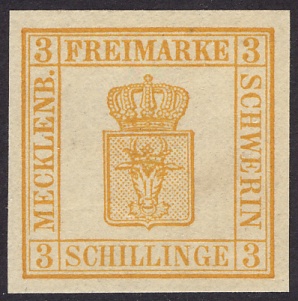
Specialty Catalogs: Michel is used by specialists, but Scott, especially the Scott classic catalog, is actually quite good.
Specialty Albums: Lighthouse is the gold standard,

Specialty Catalogs: Michel is used by specialists, but Scott, especially the Scott classic catalog, is actually quite good.
Specialty Albums: Lighthouse is the gold standard,
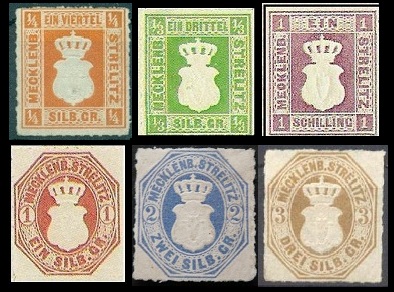 What Can Be Done: Mecklenburg-Strelitz is one of the easiest of the world’s countries to complete. There are only six stamps that were issued by that country. Mecklenburg Strelitz was an unimportant Duchy that maintained an uneasy independence from the more prominent Mecklenburg-Schwerin (A story that underscores Mecklenburg Strelitz’s unimportance was that when Britain’s George III was looking around for a bride, the big selling point for Princess Charlotte of Mecklenburg-Strelitz was that she came from such an unimportant place, that she brought no geopolitical entanglements). Many countries of uneasy independence have issued postage stamps as a way of asserting sovereignty, and Mecklenburg-Strelitz is one of them. The stamps were available for postage before Confederation into the German Empire in 1871. The stamps were seldom used on mail and some sell for thousands of dollars in genuine used condition. After Confederation, the stamps that remained in the
What Can Be Done: Mecklenburg-Strelitz is one of the easiest of the world’s countries to complete. There are only six stamps that were issued by that country. Mecklenburg Strelitz was an unimportant Duchy that maintained an uneasy independence from the more prominent Mecklenburg-Schwerin (A story that underscores Mecklenburg Strelitz’s unimportance was that when Britain’s George III was looking around for a bride, the big selling point for Princess Charlotte of Mecklenburg-Strelitz was that she came from such an unimportant place, that she brought no geopolitical entanglements). Many countries of uneasy independence have issued postage stamps as a way of asserting sovereignty, and Mecklenburg-Strelitz is one of them. The stamps were available for postage before Confederation into the German Empire in 1871. The stamps were seldom used on mail and some sell for thousands of dollars in genuine used condition. After Confederation, the stamps that remained in the
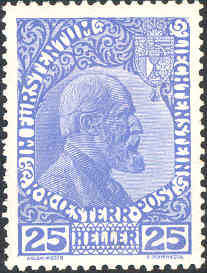 What Can Be Done: Philately has its strongest roots in Central Europe. At one time, there were over 20,000,000 stamp collectors in Germany and Switzerland alone. But more than just numbers of collectors, the German speaking peoples approach the hobby with a thoroughness and dedication that is unparalleled in the rest of the world. As part of the Germanic block of countries, Liechtenstein enjoys great popularity and an extensive collector and dealer network.
What Can Be Done: Philately has its strongest roots in Central Europe. At one time, there were over 20,000,000 stamp collectors in Germany and Switzerland alone. But more than just numbers of collectors, the German speaking peoples approach the hobby with a thoroughness and dedication that is unparalleled in the rest of the world. As part of the Germanic block of countries, Liechtenstein enjoys great popularity and an extensive collector and dealer network.
Liechtenstein came late to stamp issuing. Until the end of WWI, Liechtenstein was part of the Austro-Hungarian Empire, nominally ruled as a Principality. The Liechtenstein princes retained control of Liechtenstein after WWI, and the first stamps were issued. The early philately of Liechtenstein (before WWI) consists of stamps of Austria used in Liechtenstein post offices and are called
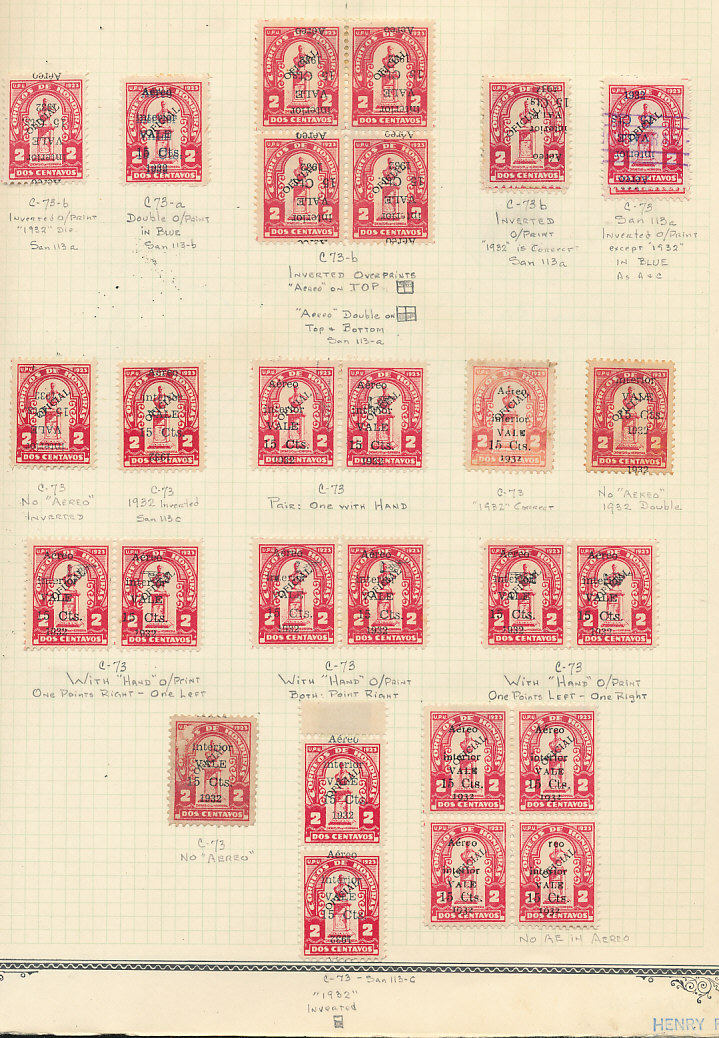 What Can Be Done: Honduras is one of the most philatelically interesting countries in the world. The first issues have a wonderful, primitive appeal. They are very rare but not very expensive. The later nineteenth century and twentieth century is loaded with scarce and difficult to find varieties. Printing methods and printers were unsophisticated in Honduras, and poverty meant that postal rate changes were effected by overprinting older stocks of stamps, not issuing newly designed ones. This makes for many varieties, many of which are very scarce and most of which are far harder to find than to afford. Post-1940 Honduras is particularly interesting due to the small number of newer issues. Honduras has always been ruled for the benefit of a few prominent families. Since there were virtually no internal philatelists to speak of and very few people outside of Honduras specialized in its stamps, the feeling was that there was little revenue to be gained by issuing new stamps. Accordingly,
What Can Be Done: Honduras is one of the most philatelically interesting countries in the world. The first issues have a wonderful, primitive appeal. They are very rare but not very expensive. The later nineteenth century and twentieth century is loaded with scarce and difficult to find varieties. Printing methods and printers were unsophisticated in Honduras, and poverty meant that postal rate changes were effected by overprinting older stocks of stamps, not issuing newly designed ones. This makes for many varieties, many of which are very scarce and most of which are far harder to find than to afford. Post-1940 Honduras is particularly interesting due to the small number of newer issues. Honduras has always been ruled for the benefit of a few prominent families. Since there were virtually no internal philatelists to speak of and very few people outside of Honduras specialized in its stamps, the feeling was that there was little revenue to be gained by issuing new stamps. Accordingly,
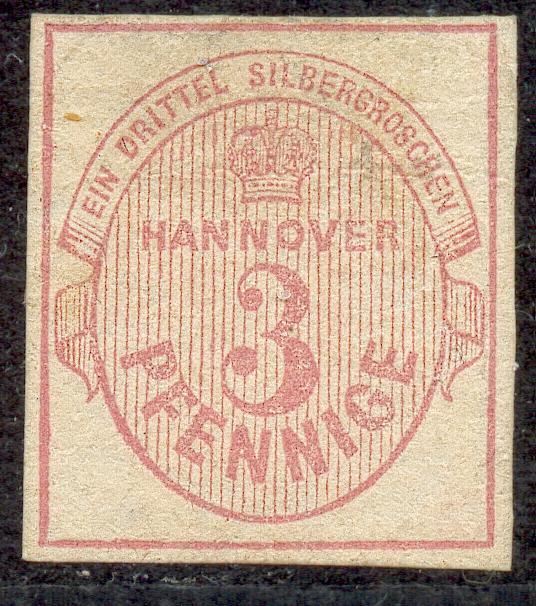 What can Be Done: Hannover is one of the more interesting of the German States to collect. The number of stamps issued is manageable (there are 29 stamps as listed by Scott), and none of them are particularly expensive or rare. What is appealing about specializing in Hannover is that it offers a very varied philatelic experience. The stamps are issued both imperforate and with roulettes. The first issues were printed with overprinted burlage-printed netting that was supposed to make counterfeiting more difficult. The burlage comes in two distinct types and there are varieties. The roulettes are interesting too.
What can Be Done: Hannover is one of the more interesting of the German States to collect. The number of stamps issued is manageable (there are 29 stamps as listed by Scott), and none of them are particularly expensive or rare. What is appealing about specializing in Hannover is that it offers a very varied philatelic experience. The stamps are issued both imperforate and with roulettes. The first issues were printed with overprinted burlage-printed netting that was supposed to make counterfeiting more difficult. The burlage comes in two distinct types and there are varieties. The roulettes are interesting too.
The most fascinating part of collecting the stamps of Hannover is how many of the different aspects of classic philately are available to you at such a modest cost. Hannover issued a plentiful number of most of their stamps
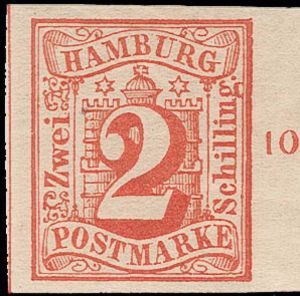 What Can Be Done: Hamburg was and is one of the most populous, active, and commercial cities in the world. From the Middle Ages onward, Hamburg, through its membership in the Hanseatic league, was involved in and had a controlling interest in North Atlantic trade. Because the communication needs of such a significant city state were so great, there are few rarities among Hamburg’s 26 postage stamps that were issued for the most part in the decade of the 1860s, before confederation. Most Hamburg stamps follow the pattern of other countries, where used stamps catalog and sell for lower prices than mint ones. But several Hamburg stamps are much rarer used than mint. The value of the first issue catalogs $100 mint and $600 used. Such a huge differential in price encourages forgers. And when you add to this the fact that the stamps of Hamburg were mostly cancelled with an easy to duplicate bar cancel, collectors should only buy used Hamburg from reputable sources.
What Can Be Done: Hamburg was and is one of the most populous, active, and commercial cities in the world. From the Middle Ages onward, Hamburg, through its membership in the Hanseatic league, was involved in and had a controlling interest in North Atlantic trade. Because the communication needs of such a significant city state were so great, there are few rarities among Hamburg’s 26 postage stamps that were issued for the most part in the decade of the 1860s, before confederation. Most Hamburg stamps follow the pattern of other countries, where used stamps catalog and sell for lower prices than mint ones. But several Hamburg stamps are much rarer used than mint. The value of the first issue catalogs $100 mint and $600 used. Such a huge differential in price encourages forgers. And when you add to this the fact that the stamps of Hamburg were mostly cancelled with an easy to duplicate bar cancel, collectors should only buy used Hamburg from reputable sources.
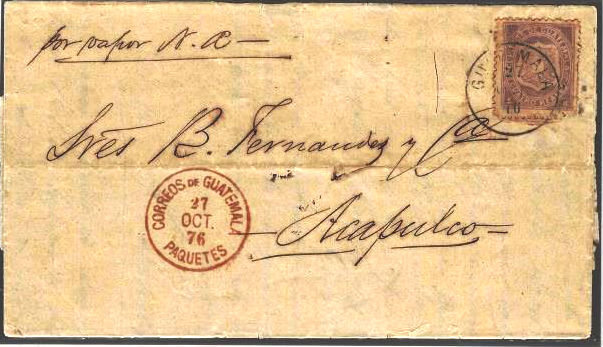 What Can Be Done: Guatemala is the most popularly collected country in Latin America. It has an active collector’s society of specialists and considerable specialized literature. The philately itself is not very difficult. The nineteenth century issues are very manageable and not too expensive. The twentieth century is quite easy to collect, and the airmails and special service stamps are interesting and usually available. Specialists of Guatemala tend to gravitate to a few of the classic overprinted issues and especially postal history and covers. Guatemala is a populous country with numerous smaller towns, and trying to find covers and stamps with postmarks from these smaller towns is daunting and has provided Guatemalan specialists with a real challenge.
What Can Be Done: Guatemala is the most popularly collected country in Latin America. It has an active collector’s society of specialists and considerable specialized literature. The philately itself is not very difficult. The nineteenth century issues are very manageable and not too expensive. The twentieth century is quite easy to collect, and the airmails and special service stamps are interesting and usually available. Specialists of Guatemala tend to gravitate to a few of the classic overprinted issues and especially postal history and covers. Guatemala is a populous country with numerous smaller towns, and trying to find covers and stamps with postmarks from these smaller towns is daunting and has provided Guatemalan specialists with a real challenge.

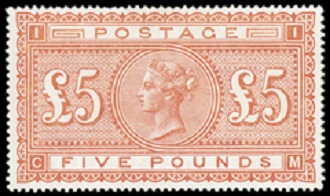 What Can Be Done: Collecting the stamps of Great Britain is one of the most popular philatelic specialties. GB issued the first stamps and the country offers many exciting specialty opportunities. The classic stamps were all printed with check letters which means that each stamp can be obtained in 240 different combinations of check letters. The classic 1 Penny stamp has over 150 plates, which can be collected in 240 positions for each plate making thousands of varieties of this inexpensive stamp alone that one can specialize in. GB philately easily breaks down into differing periods (Victoria: 1840-1900, the Kings: 1901-1953, and the Queen Elizabeth period: post 1953), that make further specialization possible, and even the most modern period has hundreds of printing varieties and types that make for very interesting collecting.
What Can Be Done: Collecting the stamps of Great Britain is one of the most popular philatelic specialties. GB issued the first stamps and the country offers many exciting specialty opportunities. The classic stamps were all printed with check letters which means that each stamp can be obtained in 240 different combinations of check letters. The classic 1 Penny stamp has over 150 plates, which can be collected in 240 positions for each plate making thousands of varieties of this inexpensive stamp alone that one can specialize in. GB philately easily breaks down into differing periods (Victoria: 1840-1900, the Kings: 1901-1953, and the Queen Elizabeth period: post 1953), that make further specialization possible, and even the most modern period has hundreds of printing varieties and types that make for very interesting collecting.
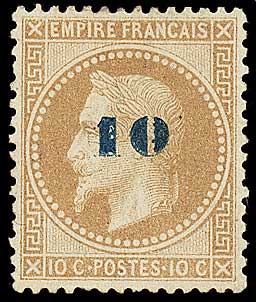 What Can be Done: The popularity of stamp collecting began a rapid trajectory in the 1860s. And nowhere did philately catch on quicker than in France (the very word for our hobby—philately—was coined by a Frenchman). The classic stamps of France can be specialized in to a high degree. There are shades and cancellations, and, for the rarity conscious, classic France has some of the rarest tête-bêche issues (tête-bêche is when two stamps exist upside down relative to each other in the plate). Tête-bêche stamps are consistent printers' errors that were made when the plate was being composed. For tête-bêche stamps to have come down to philatelists, the user of the stamp had to have saved a pair, and it had to come from a printing from the plate that
What Can be Done: The popularity of stamp collecting began a rapid trajectory in the 1860s. And nowhere did philately catch on quicker than in France (the very word for our hobby—philately—was coined by a Frenchman). The classic stamps of France can be specialized in to a high degree. There are shades and cancellations, and, for the rarity conscious, classic France has some of the rarest tête-bêche issues (tête-bêche is when two stamps exist upside down relative to each other in the plate). Tête-bêche stamps are consistent printers' errors that were made when the plate was being composed. For tête-bêche stamps to have come down to philatelists, the user of the stamp had to have saved a pair, and it had to come from a printing from the plate that
 What can be Done: El Salvador is an excellent country to collect. The classic stamps are accessible and the number of varieties manageable. The twentieth century has numerous long and interesting sets. Airmails are completeable, and the Officials have a great deal of interest. Further, since 2001, El Salvador has used the US dollar as its currency. A few nations do this (Ecuador is another). The reason is that these countries have trouble managing their debt and their budgets. Using the US dollar means that there is a stable exchange rate. This means that Salvadoran stamps don’t depreciate if the national economy deteriorates. As a result of using the US dollar, El Salvador has had rapid growth for over a decade.
What can be Done: El Salvador is an excellent country to collect. The classic stamps are accessible and the number of varieties manageable. The twentieth century has numerous long and interesting sets. Airmails are completeable, and the Officials have a great deal of interest. Further, since 2001, El Salvador has used the US dollar as its currency. A few nations do this (Ecuador is another). The reason is that these countries have trouble managing their debt and their budgets. Using the US dollar means that there is a stable exchange rate. This means that Salvadoran stamps don’t depreciate if the national economy deteriorates. As a result of using the US dollar, El Salvador has had rapid growth for over a decade.
El Salvador is one of one of several countries
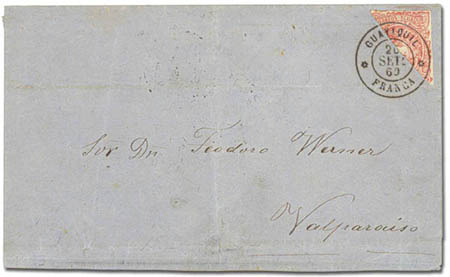 What Can Be Done: The first issues of Ecuador are primitive and interesting to collect. Americans tend to think of Latin America as one more or less geopolitical area. As you learn the history, the differences in these countries become apparent. And nowhere are the differences and the mental distance among these countries more apparent than their first issue stamps. The first issues of Luxembourg, Netherlands, and Belgium look like brothers. The first issues of Chile, Brazil, and Ecuador seem barely related (also three contiguous countries). The philately of Ecuador is very interesting in the nineteenth century with many difficult to find, though not necessarily expensive stamps. Twentieth century is more straight forward and contains many better sets. The airmails are interesting, and some specialists only collect Ecuadoran airmails.
What Can Be Done: The first issues of Ecuador are primitive and interesting to collect. Americans tend to think of Latin America as one more or less geopolitical area. As you learn the history, the differences in these countries become apparent. And nowhere are the differences and the mental distance among these countries more apparent than their first issue stamps. The first issues of Luxembourg, Netherlands, and Belgium look like brothers. The first issues of Chile, Brazil, and Ecuador seem barely related (also three contiguous countries). The philately of Ecuador is very interesting in the nineteenth century with many difficult to find, though not necessarily expensive stamps. Twentieth century is more straight forward and contains many better sets. The airmails are interesting, and some specialists only collect Ecuadoran airmails.
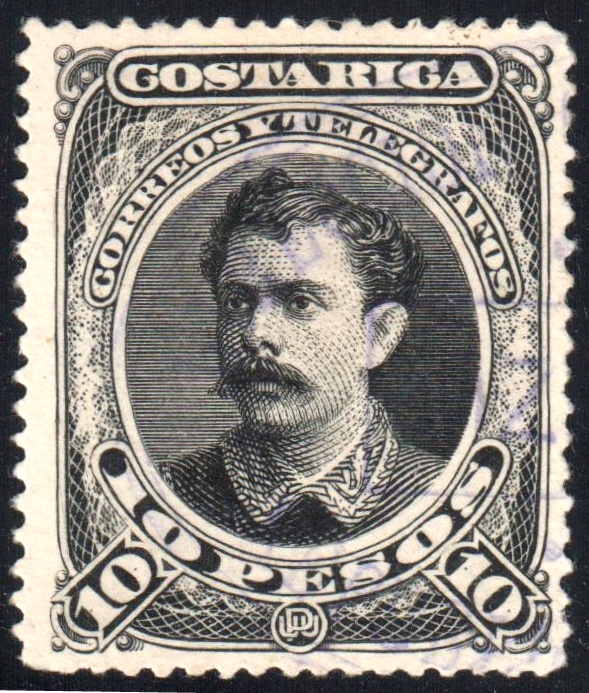 What Can Be Done: Costa Rica on the west coast of Central America, bordering the Pacific Ocean, is the wealthiest country in Central America. The country has long been a profitable exporter of agricultural products, especially coffee. In recent decades, tourism, especially ecotourism, has benefited the economy. Costa Rica has aggressively protected its natural resources, and its rain forests and mountains draw thousands of visitors each year. Costa Rica has been a stable democracy for many decades and is a relatively safe country. Because the cost of living is much lower than in the United States, this has meant that Costa Rica has benefited from many transplanted Americans, especially retirees.
What Can Be Done: Costa Rica on the west coast of Central America, bordering the Pacific Ocean, is the wealthiest country in Central America. The country has long been a profitable exporter of agricultural products, especially coffee. In recent decades, tourism, especially ecotourism, has benefited the economy. Costa Rica has aggressively protected its natural resources, and its rain forests and mountains draw thousands of visitors each year. Costa Rica has been a stable democracy for many decades and is a relatively safe country. Because the cost of living is much lower than in the United States, this has meant that Costa Rica has benefited from many transplanted Americans, especially retirees.
The stamps of Costa Rica are relatively straightforward. There are few varieties and probably fewer overprints and surcharges than on any other
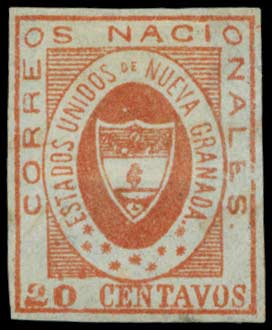 What Can Be Done: Colombian philately is the jewel of Latin American philately. The nineteenth century stamps have an allure like few others. They combine both primitiveness and beauty, and almost all are scarce and hard to find yet fairly modest in price. The classic imperfs are highly prized, but it is the later nineteenth century with its many printing varieties, shades, and perforation varieties that attracts many collectors. The twentieth century has many beautiful and interesting sets. The airmails are a world unto themselves. Colombia’s mountainous terrain made airmails extremely popular at the very earliest period in Colombia. The officially listed airmails are wonderful, and the privately issued SCADTA airmails are a rich specialty unto themselves.
What Can Be Done: Colombian philately is the jewel of Latin American philately. The nineteenth century stamps have an allure like few others. They combine both primitiveness and beauty, and almost all are scarce and hard to find yet fairly modest in price. The classic imperfs are highly prized, but it is the later nineteenth century with its many printing varieties, shades, and perforation varieties that attracts many collectors. The twentieth century has many beautiful and interesting sets. The airmails are a world unto themselves. Colombia’s mountainous terrain made airmails extremely popular at the very earliest period in Colombia. The officially listed airmails are wonderful, and the privately issued SCADTA airmails are a rich specialty unto themselves.
Colombia’s rugged topography made for more interesting philately
 What Can Be Done: Chile is the wealthiest country in Latin America and, with a highly educated population, has the highest per capita number of stamp collectors of any nation in that region. The philately of Chile is very interesting and, after making allowances for the first issues (called “Columbus Heads”), rather straightforward. The Columbus Heads seem confusing to collectors, and that’s because the listings really don’t make much sense. I’ve always been of the opinion that stamps printed on the same plates, with the same denomination and color and other characteristics should have the same main catalog number. To hold out as major varieties nearly identical stamps because they were produced by different printing companies using the same plates is confusing. Such differentiation is inconsistent, occurring for some countries and issues and not for others (Greece first issues are particularly problematic in this respect). And the reason it happens is
What Can Be Done: Chile is the wealthiest country in Latin America and, with a highly educated population, has the highest per capita number of stamp collectors of any nation in that region. The philately of Chile is very interesting and, after making allowances for the first issues (called “Columbus Heads”), rather straightforward. The Columbus Heads seem confusing to collectors, and that’s because the listings really don’t make much sense. I’ve always been of the opinion that stamps printed on the same plates, with the same denomination and color and other characteristics should have the same main catalog number. To hold out as major varieties nearly identical stamps because they were produced by different printing companies using the same plates is confusing. Such differentiation is inconsistent, occurring for some countries and issues and not for others (Greece first issues are particularly problematic in this respect). And the reason it happens is
 What Can Be Done: Bulgaria is an excellent country to collect. Until 1878 Bulgaria was part of the Ottoman (Turkish) Empire and used the stamps of Turkey. Specialists collect these stamps by identifying the Turkish stamps that were used in Bulgaria by the cancellations on the stamps. This is a thriving specialty. After independence Bulgaria issued its own stamps beginning in 1879. The early issues to 1900 are lovely examples of what nineteenth century stamp production represented to many smaller emerging nations - expressions of national sovereignty. The stamps are well designed, colorful and beautifully printed. Twentieth and twenty-first century Bulgarian philately divides into three broad categories. The first, going to WW II was from an independent Bulgaria. There are many lovely sets and, especially in the 1930s, many longer sports thematic sets that have become hard to find and expensive.
What Can Be Done: Bulgaria is an excellent country to collect. Until 1878 Bulgaria was part of the Ottoman (Turkish) Empire and used the stamps of Turkey. Specialists collect these stamps by identifying the Turkish stamps that were used in Bulgaria by the cancellations on the stamps. This is a thriving specialty. After independence Bulgaria issued its own stamps beginning in 1879. The early issues to 1900 are lovely examples of what nineteenth century stamp production represented to many smaller emerging nations - expressions of national sovereignty. The stamps are well designed, colorful and beautifully printed. Twentieth and twenty-first century Bulgarian philately divides into three broad categories. The first, going to WW II was from an independent Bulgaria. There are many lovely sets and, especially in the 1930s, many longer sports thematic sets that have become hard to find and expensive.
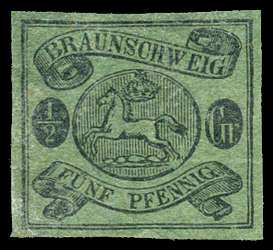 What Can Be Done: Brunswick is one of the more interesting and manageable of the German States to collect. It has a limited number of stamps and, though several of them are scarce, none are rare. There are some forgeries, but they don’t present nearly the problem that they do for several of the other smaller German States. (Interestingly, it is the smaller German States with the fewest issues that present the greatest problem with forgeries. There are many forgeries of Bergdorf and Lubeck, for instance, and very few for Bavaria, Prussia, and Wurttemberg. I’ve never seen this written about, but my speculation is that the German States that remained administrative districts after German Confederation in 1871—such as Bavaria and Prussia—exercised some criminal control over counterfeiting of their former stamps. This didn’t exist for the stamps of the smaller states that got folded into the larger states, and so there are more counterfeits of those stamps.)
What Can Be Done: Brunswick is one of the more interesting and manageable of the German States to collect. It has a limited number of stamps and, though several of them are scarce, none are rare. There are some forgeries, but they don’t present nearly the problem that they do for several of the other smaller German States. (Interestingly, it is the smaller German States with the fewest issues that present the greatest problem with forgeries. There are many forgeries of Bergdorf and Lubeck, for instance, and very few for Bavaria, Prussia, and Wurttemberg. I’ve never seen this written about, but my speculation is that the German States that remained administrative districts after German Confederation in 1871—such as Bavaria and Prussia—exercised some criminal control over counterfeiting of their former stamps. This didn’t exist for the stamps of the smaller states that got folded into the larger states, and so there are more counterfeits of those stamps.)
 What Can Be Done: Bremen is a city in the north of Germany near the North Sea. It was a part of the Hanseatic League and was its own city state before the confederation of Germany. The stamps of Bremen are very difficult to collect and to specialize in. There are a total of 16 stamps as listed by Scott, and they consist of a few basic issues that were issued imperf, perf, and rouletted. When identical plates and printers were used for issues over a period of years that only differ in the separation method for the stamp, it makes for uninteresting philately. In the case of Bremen, this issue is compounded by the fact that depending on the stamp, sometimes the perf is more valuable than the imperf, and again depending on the stamp sometimes the roulette is the best. Add in the confusion of the used stamps of Bremen being worth far more than the mint and this being further compounded by over twenty different forgers having tried their hand at producing Bremen forgeries, collectors
What Can Be Done: Bremen is a city in the north of Germany near the North Sea. It was a part of the Hanseatic League and was its own city state before the confederation of Germany. The stamps of Bremen are very difficult to collect and to specialize in. There are a total of 16 stamps as listed by Scott, and they consist of a few basic issues that were issued imperf, perf, and rouletted. When identical plates and printers were used for issues over a period of years that only differ in the separation method for the stamp, it makes for uninteresting philately. In the case of Bremen, this issue is compounded by the fact that depending on the stamp, sometimes the perf is more valuable than the imperf, and again depending on the stamp sometimes the roulette is the best. Add in the confusion of the used stamps of Bremen being worth far more than the mint and this being further compounded by over twenty different forgers having tried their hand at producing Bremen forgeries, collectors
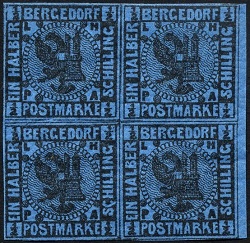 What Can Be Done: If you want to collect a country that was among the first issuers of stamps, that is easy to complete, and which can be completed for less than $50, then Bergedorf is for you. Bergedorf is a city in northern Germany that for a short period between 1861-1867 issued its own postage stamps. Bergedorf has five postal issues and all of them are quite common. The postal issues of Bergedorf seemed more like a political statement than a postal one (throughout the period that Bergedorf had its own stamps, the vast majority of the mail that was carried by the Bergedorf post office was not stamped mail but rather stampless covers that were posted directly at the post office). Bergedorf was a tiny enclave near Hamburg. It has been a frequent occurrence throughout stamp issuing history that how countries and entities issue postage stamps is a way of proclaiming sovereignty and independence. If you have your own flag and your own stamps and your own currency, then you are
What Can Be Done: If you want to collect a country that was among the first issuers of stamps, that is easy to complete, and which can be completed for less than $50, then Bergedorf is for you. Bergedorf is a city in northern Germany that for a short period between 1861-1867 issued its own postage stamps. Bergedorf has five postal issues and all of them are quite common. The postal issues of Bergedorf seemed more like a political statement than a postal one (throughout the period that Bergedorf had its own stamps, the vast majority of the mail that was carried by the Bergedorf post office was not stamped mail but rather stampless covers that were posted directly at the post office). Bergedorf was a tiny enclave near Hamburg. It has been a frequent occurrence throughout stamp issuing history that how countries and entities issue postage stamps is a way of proclaiming sovereignty and independence. If you have your own flag and your own stamps and your own currency, then you are
 What Can Be Done: Argentina is a case study in how important it is that a country’s political system works. In 1930, Argentina was the seventh wealthiest nation in the world. Eighty five years later, after a succession of bad governments, it has sunk to third world status. The stamps of Argentina provide a collector with the wealth of good collecting opportunities. Nineteenth century Argentina is interesting and affordable. Stay away from the first issue imperfs. They catalog a fortune and can easily be made from cut down second issue perforated stamps. I know Argentina
What Can Be Done: Argentina is a case study in how important it is that a country’s political system works. In 1930, Argentina was the seventh wealthiest nation in the world. Eighty five years later, after a succession of bad governments, it has sunk to third world status. The stamps of Argentina provide a collector with the wealth of good collecting opportunities. Nineteenth century Argentina is interesting and affordable. Stay away from the first issue imperfs. They catalog a fortune and can easily be made from cut down second issue perforated stamps. I know Argentina
 What Can Be Done: Baden is a very appealing country to collect as it can be collected as simply or as complexly as a collector might want. There are less than thirty stamps needed for completion, so the appeal of completing a major classic philatelic country drives many collectors to the stamps of Baden. And, Baden is one of the least expensive of the German States to collect and complete either mint or used.
What Can Be Done: Baden is a very appealing country to collect as it can be collected as simply or as complexly as a collector might want. There are less than thirty stamps needed for completion, so the appeal of completing a major classic philatelic country drives many collectors to the stamps of Baden. And, Baden is one of the least expensive of the German States to collect and complete either mint or used.
As is true of much of the German area, Baden can be collected at levels varying from elementary to exceedingly complex depending on the interest of the collector. Advanced collectors try to find multiples (pairs, strips, and blocks) and collect the stamps on cover. The Baden postal service used a two tiered cancellation system. The envelope was cancelled with a town cancel from the city where the cover was mailed, and the stamps